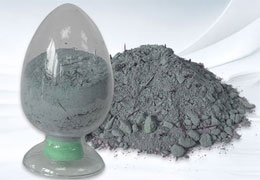Refractory mortar, refractory cement, and refractory castables are all amorphous refractory materials, and are commonly used in the refractory industry. Refractory mud is used for masonry refractory bricks, also known as refractory mortar or joint compound. It is used as a joint material for refractory product masonry. Refractory cement is a material for making refractory concrete. Refractory castables are made of refractory aggregates, powders and binders. They are also called castables because they are poured.
1. Refractory Mortar
Refractory mortar can be divided into clay, high alumina, silicon and magnesium refractory mud according to the material. It is composed of refractory powder, binder and admixture. General refractory mortar made of refractory clinker powder plus appropriate amount of plastic clay as binder and plasticizer has low strength at room temperature, and high strength is formed at high temperature to form a ceramic bond. The particle size of refractory mortar varies according to the application requirements, and its limit particle size is generally less than 1mm, and some are less than 0.5mm or finer.
The selection of refractory mortar materials should be considered together with the materials of masonry refractory products. In addition to being used as a joint material, refractory mortar can also be used as a protective coating for the lining by using the method of painting or spraying.
2. Refractory cement
Refractory cement is also called aluminate cement. Aluminate cement is a hydraulic cementitious material made of bauxite and limestone as raw materials, calcined clinker with calcium aluminate as the main component and alumina content of about 50%, and then ground. Aluminate cement is often yellow or brown, but also gray. It is used as lining for industrial kilns.
3. Refractory castable
Refractory castable is a kind of unshaped refractory material that is widely produced and used at present. It is mainly used to build integral structures such as linings of various heating furnaces. Certain premium varieties can also be used in smelting furnaces. For example, aluminate cement refractory castables can be widely used in various heating furnaces and other thermal equipment without slag and acid and alkali corrosion. In parts that are corroded by molten iron, molten steel and slag and have high working temperature, such as tapping chute, ladle and blast furnace body, tapping trough, etc., in metallurgical furnaces and other places that are in direct contact with slag and molten metal For some parts of the container, repairing with high-quality phosphate refractory castables also has good results.



